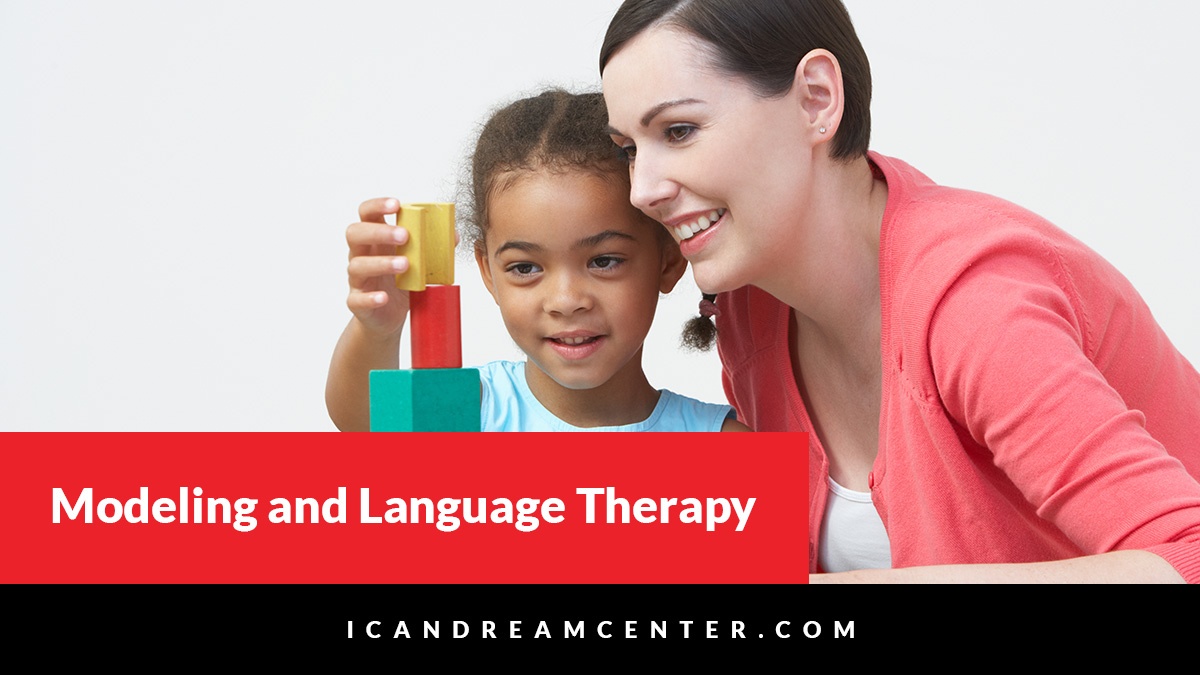
Modeling and Language Therapy
Modeling plays an important role in learning. It focuses on imitation rather than directly correcting or instructing the child. When teaching a new skill, it is always important to show the action before you expect the child to do it. Modeling can be done by anyone that has mastered the skill such as other children, teachers, and caregivers. You are probably already using modeling with your child all the time and you do not even realize it!
Modeling is the highest cuing level a speech-language pathologist (SLP) can give when a child is learning a new skill. There are many different types of modeling. For example, if the target is building on receptive language (understanding what is being said), an SLP can use the following modeling methods to expose the child to a language-rich environment:
Self-talk
The SLP is explaining what they are doing. For example, while the SLP and the child are playing dollhouse, the SLP is explaining what their doll is doing: “My doll is going up the stairs to go to sleep. The doll is going to put on her pajamas. Now my doll is going to go on the bed. She is laying down. My doll is now going to close her eyes and go to sleep!” The child does not actually need to have full attention during self-talk.
Parallel talk
The SLP is narrating what the child is doing. If they are playing dollhouse, the SLP will speak slowly and use simple phrases to explain what the child is doing with their doll. For example, “Doll is in the kitchen. Doll is under the table!” Again, the child does not actually need to have full attention during parallel talk.
Expansion
This is when the SLP adds on one or two more words to what the child says. For example, if the child says “eat,” the SLP can say “doll eat.”
Recasting
The SLP is expanding the child’s utterance by repeating what they said but with more detailed and/or grammatically correct language. For example, the child may say “Daddy goed!” and the SLP may recast by saying “Yes, Daddy went to the store. Bye Daddy!”
Modeling is necessary for children to develop their receptive language. Incorporating these types of modeling in your daily activities (e.g., in the car, making dinner, folding laundry) will create a language-rich environment that will help build those different language skills.
